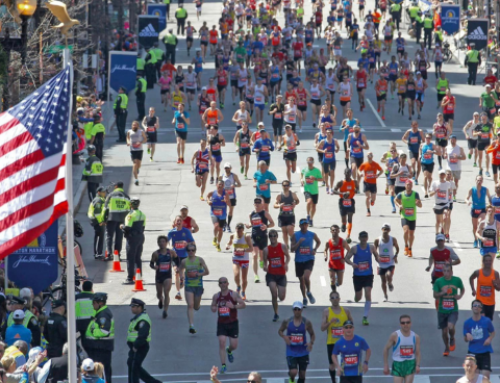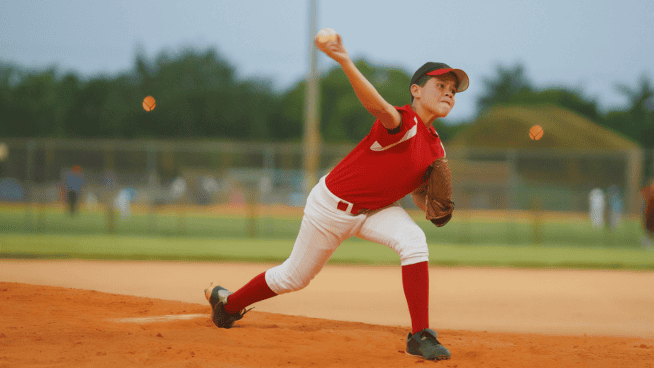Baseball Conditioning: Considerations For Pitchers
When setting up a program for baseball conditioning, the most important design consideration is the physical demands of the individual positions. For pitchers: baseball is classified as a “repeat sprint” sport, requiring short bouts of intense effort followed by rest periods that don’t allow full recovery.
Repeat sprint sports require the use of both major energy systems—anaerobic (high intensity, short duration) and aerobic (low intensity, long duration). (Learn more about Anaerobic vs. Aerobic Conditioning.) If you want your conditioning to carry over to your field performance, you must focus on developing these two energy systems. Here’s how:
Anaerobic Pitcher Conditioning
Developing the anaerobic system increases an athlete’s ability to produce energy quickly. (See Why Pitchers Must Train Anaerobically for Peak Performance.) Conditioning for this relies entirely on short, explosive exercises and strict attention to rest periods between repetitions. Keep your work-to-rest ratio between 1:5 and 1:8. This ratio means a five-second sprint would be followed by 25 to 40 seconds of rest.
Some basic ideas for anaerobic conditioning include:
- Short Sprints (10 to 40 yards)
- Explosive Med Ball Throws
- Jumps
- Short Sled Pushes/Drags
Try this great STACK-developed baseball conditioning gauntlet.
Aerobic Pitcher Conditioning
Although long distance running has been pretty much discredited in baseball, that doesn’t mean aerobic development should be ignored. A pitcher with a well-developed aerobic system can supply more blood to working muscles, recover faster between pitches and maintain a higher muscle temperature during rest. You will benefit by training your body to not cool down and get stiff between innings.
Aerobic conditioning requires effort at around 75% max intensity. On a scale of zero to 10, zero being rest and 10 being max, you want your perceived exertion to be around 7. The goal is not to “feel the burn.” Aerobic conditioning sessions should generally last around 30 minutes, no more than 40 minutes. Some simple ideas for aerobic conditioning:
- Low Intensity Bodyweight Circuits. Think along the lines of general exercises like Push-Ups, Squats and Ab Crunches.
- Frisbee. As silly as it sounds, this is a great way to move around and keep your heart rate elevated without feeling like you’re “conditioning.”
- Route running. Grab a football and throw some pass routes. Again, this is a fun and easy way to break up the monotony of traditional conditioning.
- Tempo runs. Jog between 60 and 100 yards, perform a set of Push-Ups or Crunches, then repeat.
photo: universityofpitching.com
RECOMMENDED FOR YOU
Baseball Conditioning: Considerations For Pitchers
When setting up a program for baseball conditioning, the most important design consideration is the physical demands of the individual positions. For pitchers: baseball is classified as a “repeat sprint” sport, requiring short bouts of intense effort followed by rest periods that don’t allow full recovery.
Repeat sprint sports require the use of both major energy systems—anaerobic (high intensity, short duration) and aerobic (low intensity, long duration). (Learn more about Anaerobic vs. Aerobic Conditioning.) If you want your conditioning to carry over to your field performance, you must focus on developing these two energy systems. Here’s how:
Anaerobic Pitcher Conditioning
Developing the anaerobic system increases an athlete’s ability to produce energy quickly. (See Why Pitchers Must Train Anaerobically for Peak Performance.) Conditioning for this relies entirely on short, explosive exercises and strict attention to rest periods between repetitions. Keep your work-to-rest ratio between 1:5 and 1:8. This ratio means a five-second sprint would be followed by 25 to 40 seconds of rest.
Some basic ideas for anaerobic conditioning include:
- Short Sprints (10 to 40 yards)
- Explosive Med Ball Throws
- Jumps
- Short Sled Pushes/Drags
Try this great STACK-developed baseball conditioning gauntlet.
Aerobic Pitcher Conditioning
Although long distance running has been pretty much discredited in baseball, that doesn’t mean aerobic development should be ignored. A pitcher with a well-developed aerobic system can supply more blood to working muscles, recover faster between pitches and maintain a higher muscle temperature during rest. You will benefit by training your body to not cool down and get stiff between innings.
Aerobic conditioning requires effort at around 75% max intensity. On a scale of zero to 10, zero being rest and 10 being max, you want your perceived exertion to be around 7. The goal is not to “feel the burn.” Aerobic conditioning sessions should generally last around 30 minutes, no more than 40 minutes. Some simple ideas for aerobic conditioning:
- Low Intensity Bodyweight Circuits. Think along the lines of general exercises like Push-Ups, Squats and Ab Crunches.
- Frisbee. As silly as it sounds, this is a great way to move around and keep your heart rate elevated without feeling like you’re “conditioning.”
- Route running. Grab a football and throw some pass routes. Again, this is a fun and easy way to break up the monotony of traditional conditioning.
- Tempo runs. Jog between 60 and 100 yards, perform a set of Push-Ups or Crunches, then repeat.
photo: universityofpitching.com











